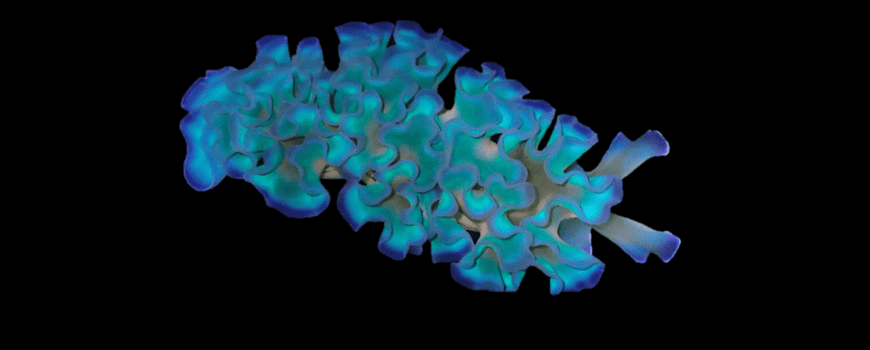the Stady It sheds light on the photoprotection strategies used by three species of marine snails -Elicia Crispata, Elysia Velutinus And Elicia Ornata – Collected on coral reefs in Curacao, which live in environments with a lot of light. These snails steal chloroplasts (the organelle that produces energy from sunlight in plants and algae) from the algae they eat. These kleptoplasts continue to produce energy once inside the snail. This article explains that these sea snails protect their cells from too much light, allowing them to produce more energy that the sea snail then uses.
Meet the team
Elysia Crispata They are usually found at depths between 5 and 15 metres. These sea snails have different colours, which may indicate population-specific differences in light-seeking behaviour. In contrast to previous reports on hiding behavior, this study observed E. Crispata Individuals who are exposed to full sunlight and use their bodies to provide shade. This behavior demonstrated the ability of this species to actually control the light that reaches the plastids.

Elysia Velutinus It has been found to prefer depths from 4 to 6 meters and relies on eating macroalgae for camouflage. It showed a mild avoidance response in laboratory tests. The study suggests that these sea snails likely avoid excess light by seeking shelter among algae, demonstrating a unique strategy for protection from light.
Elicia Ornata It usually lives in shallow waters and is associated with… Plum glans (feather grasses). These sea snails showed a strong negative photoresponse, indicating a preference for darkness. Despite having the highest light intensity ideal for the species studied, it showed signs of this Oxidative stressPossibly due to limited photoprotection mechanisms.

Ramifications
The study highlights the need to take natural lighting conditions into account when studying photosynthetic organisms, revealing a difference between experimental conditions in the laboratory and reality in the field. The complex adaptations to photoprotection observed in these marine snail species provide valuable insights into their interactions with high-light environments and highlight the importance of understanding environmental context to obtain accurate research results.
DCNA
the Dutch Caribbean Nature Alliance (DCNA) Supports (scientific) communication and awareness-raising in the Dutch Caribbean by making nature-related scientific information more widely available through, among other things, Dutch Caribbean Biodiversity DatabaseDCNA news platform Vital news And journalism. This article contains results of various (scientific) projects, but the projects themselves are not DCNA projects. No rights can be derived from the content. DCNA is not responsible for the content and indirect consequences resulting from the publication of this article.
text: DCNA
Photo: Elise M.J. Litz; Laia Borges Palau (main image: E. Crispata); Julia Sina











More Stories
Monster Jam Showdown Launch Trailer
The European Digital Twin Ocean prototype reveals many possibilities
Instagram now lets you add a song to your account